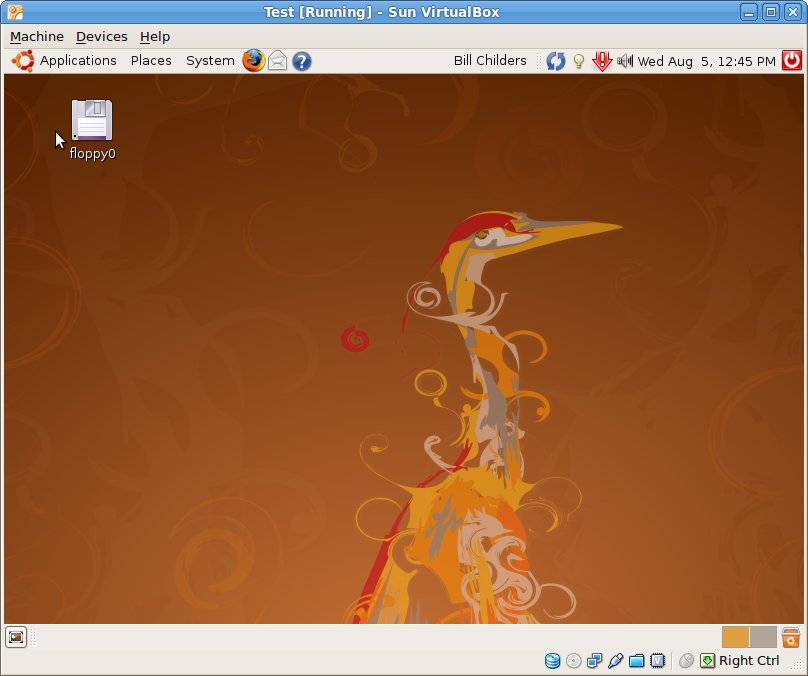

- #Multipass vs virtualbox for mac os
- #Multipass vs virtualbox mac os x
- #Multipass vs virtualbox install
- #Multipass vs virtualbox full
Multipass is the easiest way to instantly stand up Ubuntu Virtual Machines on your computer, It brings the convenience and ease of using Homebrew to Virtual Machines. Here's the list of partners and here's how I make money. If you buy anything I mention using my referral links, I may get a small commission at no additional cost to you. Once the installation is finished start Firefox as so: DISPLAY=192.168.1.I only endorse tools I've personally used.
#Multipass vs virtualbox full
You can also run ps aux to see that indeed this is a full Linux/Ubuntu system.
#Multipass vs virtualbox install
The shell command SSH's you into the virtual machine giving you a login shell.įrom there we simply use apt-get to install Firefox as we'd do on any Linux machine. With this information collected go into the virtual machine and install Firefox: $ multipass shell sudo apt-get install firefox It is useful to configure the XQuartz display server to allow connections: $ xhost + $IP So of course this will have to be re-executed every time that file changes.Īnother thing is to record your IP address: $ export IP=$(ifconfig en0 | grep inet | awk '$1="inet" ') The transfer command copies the file into the virtual machine. The attempt to mount the file failed, as I said. $ multipass transfer ~/.Xauthority foo:/home/ubuntu/.Xauthority Source path "/Users/david/.Xauthority" is not a directory So we had to do this instead: $ multipass mount ~/.Xauthority foo:/home/ubuntu/.Xauthority The next file to inject is ~/.Xauthority - unfortunately Multipass only lets us mount directories, not files, into the virtual machine. To inject the /tmp/.X11-unix directory into the virtual machine we do: $ multipass mount /tmp/.X11-unix foo:/tmp/.X11-unix There are a number of options such as setting memory limits. This tells Multipass to create a new Ubuntu instance giving it the name firefox. We'll be able to do the same with Multipass. In the Docker-based demo we injected a couple files into the Docker container.
#Multipass vs virtualbox mac os x
Setting up a Multipass virtual machine to run FirefoxĪs with the Docker-based demo we'll run Firefox inside a virtual machine, and display on the Mac OS X desktop using XQuartz. The Docker container we're about to create counts - as would a Linux machine in your office. This opens the display so it accepts X11 connections from any non-local computer. Namely - Allow connections from network clients. Once you have XQuartz running, go into its Preferences and make this settings change: You can also get XQuartz via the Homebrew or MacPorts repositories. It is recommended to reboot the computer afterwards. the DMG includes an installable package, so simply run the installer.
#Multipass vs virtualbox for mac os
XQuartz is an X11 display server for Mac OS X. Otherwise Multipass gives you a somewhat similar user experience - you can quickly create and destroy virtual machines with Multipass just as you do with Docker, meaning you can quickly set up a test machine, run a few commands, then destroy the test machine when done. With Docker you do not have a full operating system environment. This is very different from a Docker container. It is like running VirtualBox or other virtual machine environments in that you have a full-fledged computer sitting inside the hypervisor environment. In more practical terms, it is a light-weight virtual machine hypervisor preconfigured for installing Ubuntu instances. What is MultipassĬanonical describes it as a A mini-cloud on your Mac or Windows workstation. In this demo we'll use Firefox but it should work for any Linux GUI application.


For this article we'll skim over some of the details, so for a full discussion of the X11 authentication required see the other article. This approach is similar, and perhaps there is value to using a full virtual machine instead of a Docker container. We have documented a similar solution using a Docker container: Run Linux/X11 apps in Docker and display on a Mac OS X desktopĪnother tutorial documents setting up a full Linux desktop session in Multipass using VNC: Use Canonical's Multipass to display Linux desktop on macOS desktop and VNC


 0 kommentar(er)
0 kommentar(er)
